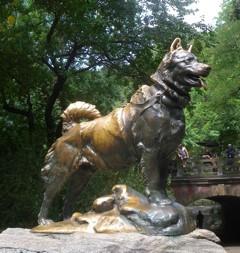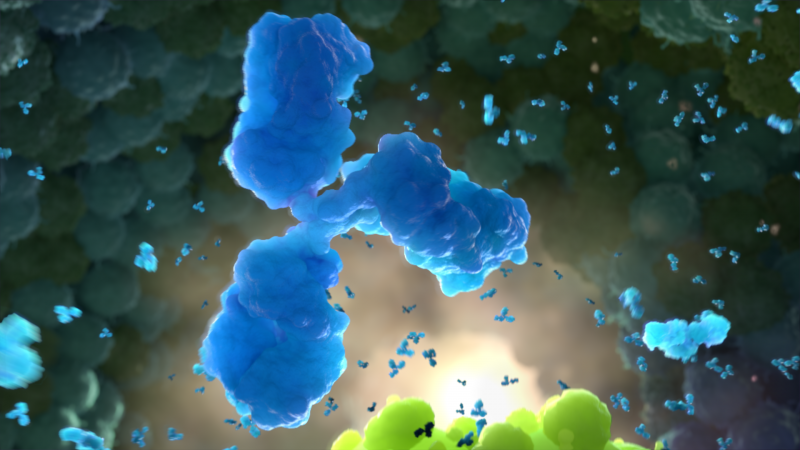Animation Expedition #2 - A Race Against Time: How Do Antibodies Work?

Balto was the lead dog on the final relay team. A statue in New York's Central Park honors all the dogs in the Great Race of Mercy.
Have you ever heard of Nome, Alaska? Perhaps not. However, Nome wears a badge of honor in the endless battle of humans versus disease. In 1925, dog sled teams raced against time through an Alaskan winter to save the people of Nome. The race was a national sensation, dubbed the “Great Race of Mercy.”
View the animation How do Antibodies Work?
From the first scene in the video, you sense the urgency. It’s like a scene out of Call of the Wild. You see mushers pressing dog teams through a frozen wilderness. What was so vital? The remote outpost of Nome was under siege. But this was a battle against an unseen enemy—diphtheria. This bacterial disease kills as many as one in ten patients. In children under five and adults over 40, up to one in five victims may die.
Why is the disease so deadly? The bacterium releases a powerful toxin. Watch the video to see how the poison rampages through the body. It destroys cells. It can damage the heart, nerves, or block the breathing tubes. Today, vaccination prevents most diphtheria cases. Antibiotics can treat it. Back in 1925, antibiotics were not yet invented. Scientists used a different treatment for diphtheria. This treatment countered the toxin. It is called “antitoxin.” To make antitoxin, scientists used antibodies. They got the antibodies from the blood of horses infected with diphtheria. As you'll see in the animation, the antibodies recognize the toxin. They glom onto it, rendering it harmless to cells.
It was the antitoxin that 20 mushers and 150 sled dogs hauled across Alaska. Theirs literally was a race against time. Officials faced the very real threat of an epidemic. Children were sick. It was the depths of an Alaskan winter. Air travel was impossible due to the cold. Shipping ports were frozen. The only option was dog sled. Officials organized the sled dog teams.
On January 27, 1925 the first musher set out for Nome. The mushers suffered hypothermia and frostbite. Several dogs perished. Yet, the relay team completed the 674-mile journey in five and a half days. The trip usually took 25 days. Balto was the lead dog on the final relay team. A statue in New York's Central Park honors all the dogs in the Great Race of Mercy.
The event was a milestone in the fight against infectious disease. The public saw that human courage combined with scientific knowledge could save countless lives. Balto was the lead dog on the final relay team. A statue in New York's Central Park honors all the dogs in the Great Race of Mercy.
Check Your Understanding Question
The animation shows three types of immune cells. Match the type of cell with its definition.
1. Helper T-cell
2. B-cell
3. Dendritic cell
A. Detects invaders and creates a recognition "tag"
B. Releases chemicals that regulate the immune response
C. Reads the recognition "tag" and produces antibodies
Answer
- B
- C
- A
The helper T-cell (1) releases chemicals that regulate the immune response (B). The B-cell (2) reads the recognition "tag" and produces antibodies. The dendritic cell (3) detects invaders and creates a recognition "tag".
This is the second in a series of postings highlighting our Vaccine Makers Project animations.

